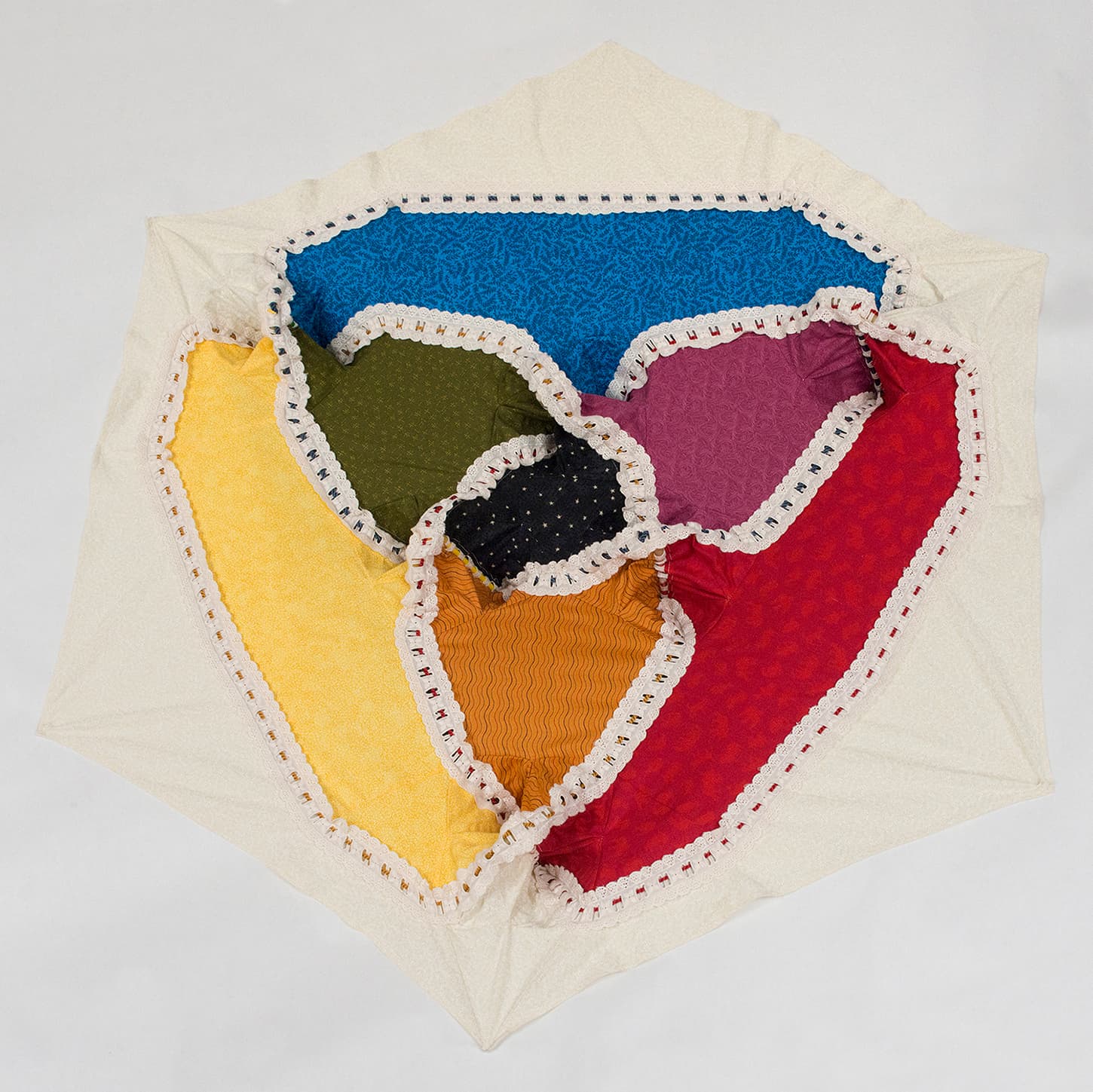Barbara Nimershiem
Artists
Barbara Nimershiem
Associate Professor of Mathematics
Department of Mathematics, Franklin & Marshall College
Lancaster, Pennsylvania, USA
Statement
As a mathematician working in low-dimensional topology and geometry, I make use of the many images in my mind's eye. As a teacher, I wish to transport those beautiful images into the minds of others. I create models in an attempt to bridge the gap and share what I see.
Artworks

Borromean Rings Quilt II (closed)
25 x 25 x 20 cm
cotton fabric, beaded eyelet lace, cording, wooden sticks, latex tubing
2015
Inspired by William Thurston's description of the complement of the Borromean rings (Section 3.4, "The Geometry and Topology of Three-Manifolds"), this pair of quilts demonstrates his construction and is especially useful in visualizing how to deform the spanning 2-complex---shown from above in Quilt I and from below in Quilt II (when open)---into the boundary of an octahedron. Using the quilts, we perform this deformation by pulling on the cording and gathering each arc to a point (a vertex). In doing so, each quilt closes up into an octahedron, with 8 fabric faces, 12 stick edges, and 6 cording vertices. The colorings on the faces, edges, and vertices indicate how to identify the octahedra to form the complement of the Borromean rings.

Borromean Rings Quilt I (open)
120 x 105 x 25 cm
cotton fabric, beaded eyelet lace, cording, wooden sticks, latex tubing
2014
Inspired by William Thurston's description of the complement of the Borromean rings (Section 3.4, "The Geometry and Topology of Three-Manifolds"), this pair of quilts demonstrates his construction and is especially useful in visualizing how to deform the spanning 2-complex---shown from above in Quilt I and from below in Quilt II (when open)---into the boundary of an octahedron. Using the quilts, we perform this deformation by pulling on the cording and gathering each arc to a point (a vertex). In doing so, each quilt closes up into an octahedron, with 8 fabric faces, 12 stick edges, and 6 cording vertices. The colorings on the faces, edges, and vertices indicate how to identify the octahedra to form the complement of the Borromean rings.